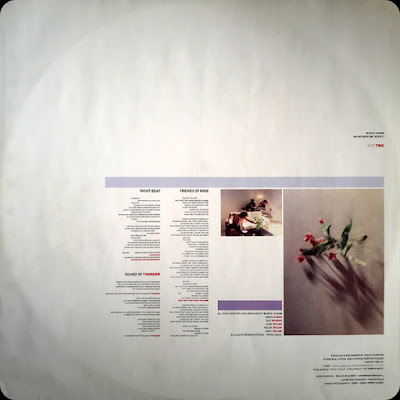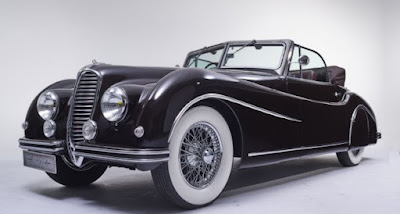Info
Artist: New Order
Album: Movement
Year: 1981
Label: Factory
Design [Sleeve Design]: Peter Saville, Grafica Industria
The Inspiration
The album's cover was designed by Peter Saville and is
based on a cover of the Futurismo journal of 1932 by the Italian Futurist Fortunato Depero.

"Movement happened in exactly the same way as Closer (Joy Division album). Rob (Rob Gretton, manager of Joy Division and New Order) brought them round and asked, "What are you into?" I said, Italian Futurism. I showed them a book, they put post-it notes in it and left. They'd marked a particular poster, so I said OK, something like this? Rob said, "No, not something like it. That." We don't have time to mess around. I was compromised with Movement, so I wanted to put: "Designed by Peter Saville, after Fortunato Depero". [Then] Rob said, "Those Futurists, they got mixed up with fascism, didn't they? We've had enough of that with Joy Division, take it off." But the whole point was that it is a Futurist poster. They called the record Movement and Futurism as an art form was focused around speed and movement. In the early 20th century, the world was speeding up and it was a conjoined art and political movement."
Peter Saville (graphic designer)
"One thing I like about him (Peter Saville) is that he is open to ideas but has a definite authority in what he believes to be good. Our covers, both for Joy Division and New Order, have come about in different ways: sometimes we’d take an image to Peter, other times we’d all sit down with him and look through books in the studio, or he’d bring something to show us. The Italian Futurist-style cover of Movement, for example, was entirely Peter’s creation."
Bernard Sumner (New Order, vocals)
Design
The designers made subtle changes by substituting the text and reconfigurating graphic elements. The
shape created by the top three lines is an 'F' (lying on its back), which
refers to Factory Records/Factory Communications Limited.
The bottom two
lines create an 'L' (lying on its front), the Roman numeral
50, the original catalogue was FACT 50.
The blue colour of the lines was chosen
by the band. The first copies in the US had the same design in brown on an
ivory background.

"In the days of vinyl, when people bought
twelve-inch records, the artwork was very important because it represented the
band and its taste. Also, we were of the opinion that if you bought a record
with a great sleeve you were getting two pieces of art for the price of one:
the music and the artwork. It was important to us, the sleeve. When we were
kids buying records we thought the choice of cover for a record was really
interesting. We’d wonder what it was saying, how it worked in conjunction with
the music and what it said about the band. Today’s digital age has reduced the
impact of a record sleeve, and I think that’s a great shame, but thanks to
Peter we’ve had some fantastic ones. To begin with, I’d quite fancied doing the
album covers myself. I used to become involved to a limited extent, because it
was something I was really interested in, but as soon as Peter came along I
knew we were in safe hands."
Bernard Sumner
"Procession / Everything's Gone Green" Single
Similar to the album cover for Movement,
the artwork is taken from a "Dinamo Futurista" (1927) magazine cover done by
Fortunato
Depero.
Notably, the UK release's sleeve came in nine different colour versions, specified by different band members, their management and designers. The sleeve features no typographic information other than a catalogue number "53" on the reverse.
Depero Futurista
Known as the Bolted Book because of
its signature binding using two industrial bolts, Depero Futurista was conceived as a showcase
and “portable museum” for the work of Italian Futurist artist Fortunato Depero
(1892–1960). Written and designed by Depero, it was published in 1927 and dubbed
“a typographical racing car” by Futurism’s founder, F.T. Marinetti. Today it’s recognized as the first
modern-day artist’s book.
Following the release
of this book Depero moved on to New York, where he continued to paint, design
for the theatre and work as a freelance advertising designer. He designed
covers for magazines such as Vanity Fair, but the majority of his work was used
to promote futurism as well as himself. In 1929, Depero wrote the outline for
Il Futurismo e l’arte pubblicitaria (Futurism and the Art of Advertising),
which spoke of the inevitable impact that advertising would make on art in the
future.





























